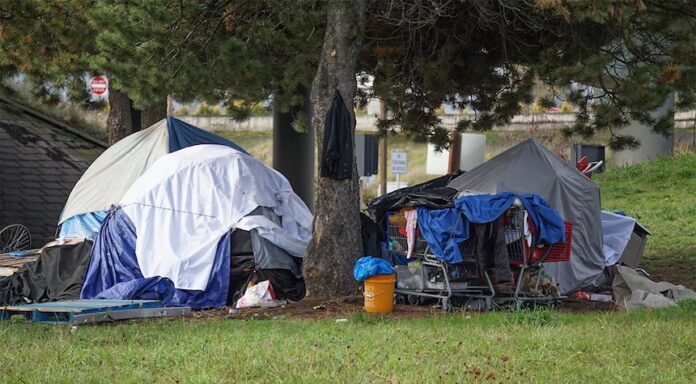Downtown Portland Oregon is like an open-air drug store.
In the City, heroin, methamphetamine, and fentanyl abuse are rampant. Portland officers often drive by homeless addicts buying and using drugs.
Sources close to law enforcement say that signs and symptoms of drug dependence are increasing in Oregon. Nearly one-fifth of Oregon’s residents are dependent on drugs.
Voters approved Measure 110 in November 2020. With 58% of the votes, the Drug Addiction Treatment and Recovery Act passed. It makes meth, cocaine, heroin, and fentanyl in small quantities legal.
The new law makes possession of these substances a Class E offense, which is the same severity as a traffic ticket. The maximum fine is $100. Instead of drug addicts being put behind bars, the idea is to connect them with treatment services.
Sixteen months into this first-in-the-nation experiment, the numbers paint a bleak picture. Drug overdose deaths hit an all-time high in 2021 with 1069, a 41% increase from 2020. And very few people are getting into treatment. According to The Lund Report, after one year, just 136 people had entered treatment, less than 1% of those helped by Measure 110. But the actual number may be even lower.
David Murray, a Hudson Institute senior fellow, advised two drug czars during two presidential administrations.
Murray said, “It was not predictable, but it was anticipated, now, unfortunately… is coming into our sight.”
According to the Oregon Judicial Department, 2,576 tickets were issued for drug possession in Oregon by police since Measure 110 was passed. Most of these tickets were not presented in court and the majority were convicted.
Fox News reported that Lines for Life has been called on by only 116 people.
Holton said that about 20% of people involved in (addiction services) were newcomers and needed resources.
Mike Marshall is the co-founder and director at Oregon Recovers. He was not surprised by the poor outcomes of Measure 110 implementation.
Marshall stated that “It wasn’t designed to lower addictive rates, so it wasn’t intended to address our dependence crisis.”
While Oregon may have won the war on drugs, crime continues rising which keeps police busy.
“What we are seeing is that drug possession has been made illegal and that property crimes have increased.” Violent crime has also increased. Fox News reports that rural Oregon police are seeing more thefts by people who steal in order to feed their addictions.
Portland, which is the largest city in the state, set a new murder record of 90 in 2021. They claim that there has been an increase in homicides because of drug turf wars among gangs.
Tera Hurst is the executive director of Health Justice Recovery Alliance. Only 10% of the $300,000,000 available for Measure 110 funding has been used.
This money cannot be used for treatment, and it comes from the cannabis tax revenues. Measure 110 covers services that aid in harm reduction and recovery.
Initial $30,000,000 in grants was used for needle exchange programs, peer counseling, and support housing.
Hurst stated, “I don’t believe it’s about getting people into treatment. It’s about getting people out on the streets, doing outreach, and then getting them lifesaving medication.
Oregon Health Authority oversees Measure110 and protects patients’ inability to get treatment.
Timothy Heider, spokesperson for OHA stated that patients should only be admitted to treatment when they are ready.




